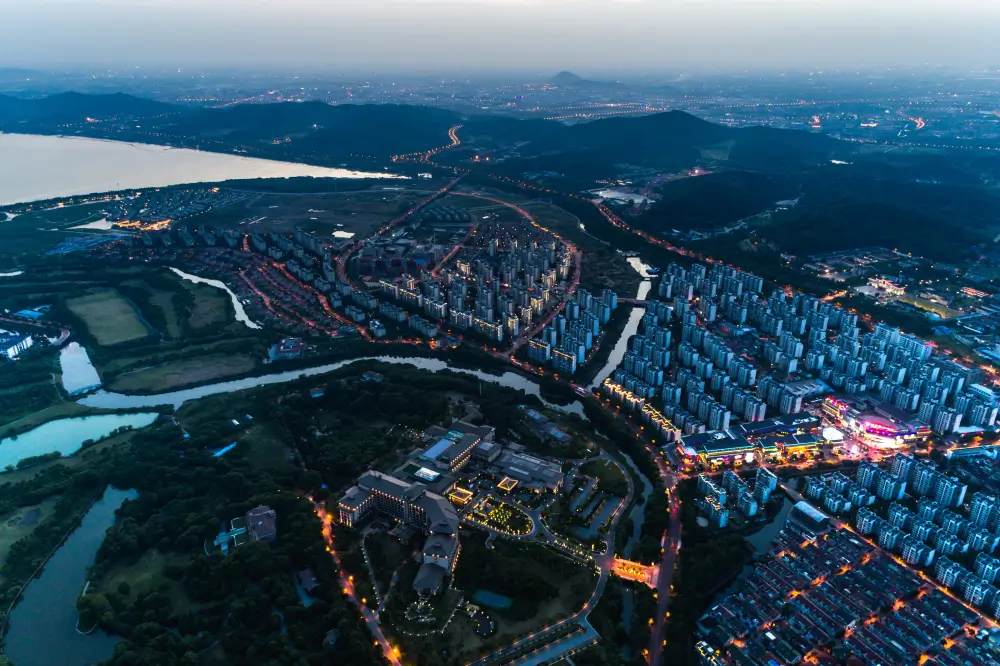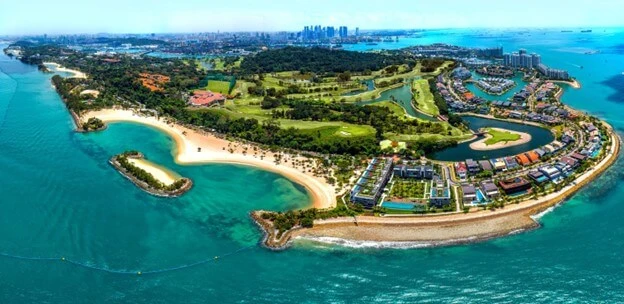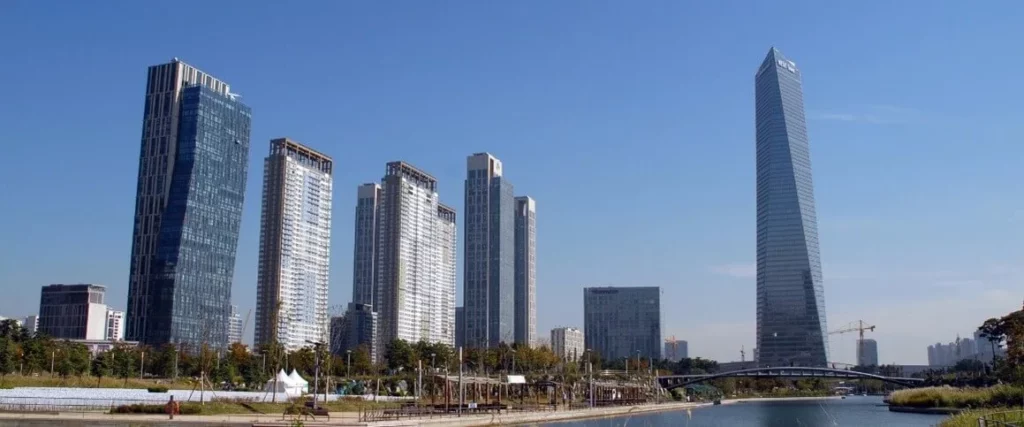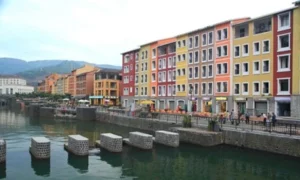Smart cities: a far-fetched utopian dream or a promising vision for the future?

Table of Contents
The concept of smart cities is rapidly evolving. The diverse experiences of cities such as Sejong, Sentosa, Songdo, and Lavasa serve as blueprints for a successful city. This article analyzes their visions, strategies, best practices, and missteps to uncover insights for the future of smart urban development.
Navigating Smart City Realities and Ambitions
Smart cities feature innovative urban planning that leverages the latest technologies and sustainability practices to enhance residents’ quality of life. They are designed without the constraints of existing infrastructure, providing a blank canvas for creating futuristic metropolises that redefine urban living.
Sejong in South Korea
Sejong in South Korea aimed to become an administrative capital and model city for 500,000 residents. It showcased technological advances such as ubiquitous CCTV cameras, electric buses, and self-driving cars. The master plan also included eco-friendly amenities like solar-powered homes and zero-waste systems. Sejong incorporated natural scenic amenities, including a 1.9-square-mile central park surrounding an artificial lake that serves as the city’s gathering place. Additionally, the city was meticulously designed with family-friendly amenities such as parks and schools. Government offices were relocated to the new business district to appeal to residents.

Sentosa Island in Singapore
Alternatively, Sentosa, the resort island in Singapore, aimed to attract tourists by becoming a world-class leisure and entertainment hub. With over 240 attractions, including hotels, amusement parks, and nature trails, Sentosa caters to diverse visitors, from families and couples to corporate travelers. Sentosa’s global marketing campaigns and partnerships with over 10 prominent hospitality brands have helped establish it as a premier tourist destination. It is worth noting that in its opening year of 1972, Sentosa attracted just over 2 million tourists. Areial Shot of Sentosa Island, Singapore

Songdo City in South Korea
On the other hand, Songdo aimed to become a model city of the future by attracting an international community of residents and businesses. However, its top-down planning approach failed to cultivate an authentic sense of community. It was described as feeling sterile and corporate, despite its green buildings and technological advances. Unlike Sejong’s focus on collaborative governance, Songdo lacked significant public participation in urban planning, resulting in a city that felt disconnected from its residents. Similarly, Songdo did not leverage the same global partnerships and diverse offerings that boosted Sentosa’s appeal. Songdo’s limited nightlife and restaurant options also failed to match expectations. Sentosa and Sejong focused on showcasing local culture, whereas Songdo felt placeless with its international chains and lack of character.

Meanwhile, Lavasa in India was modeled after Italy’s Portofino. The city struggled to get off the ground, with protracted legal and environmental disputes obstructing the construction of its planned idyllic smart city. The unfinished and legally troubled project failed to attract investors and homebuyers, leading to the abandonment and deterioration of its infrastructure.

The ability to execute tailored strategies matching their lofty goals would prove pivotal to the success or failure of such cities. All these cities faced the true test of making their ambitious visions a living reality by attracting their intended target populations.
Ingredients for Success Beyond the Blueprint
While state-of-the-art technology and urban planning are important, they are not enough. Additional key ingredients beyond the physical blueprint also contribute to the success of smart cities. Effective governance is essential for the foundation of a smart city and must be established from the outset. For example, Sentosa’s development was managed by a specialized governing corporation with a clear leadership vision. This enabled smooth progress despite the massive scale and complexity of the project. In contrast, Songdo’s top-down planning approach failed to involve the local community. This has resulted in a city that felt disconnected from its residents’ needs.
Governance
Cultivating an authentic sense of civic identity and organic growth requires genuine community participation in shaping the city. Unlike Songdo, Sejong emphasized collaborative governance, where citizens actively contributed ideas to urban planning decisions. This fostered a vibrant, livable city with a strong communal attachment.
Partnerships
Partnerships can heighten global recognition and attract visitors. For example, Sentosa aligned with over 10 prominent hospitality brands like Resorts World, Universal Studios, and Hardrock Hotels. This amplified its profile and established its reputation as a premier tourist destination. Moreover, the ability to adapt offerings to changing societal preferences prevents stagnation after the initial novelty wears off. By constantly assessing and strategically updating its many attractions, Sentosa continued to attract visitors, even after surpassing 1 million visitors in 1979. New offerings, such as world-class sporting events and refreshed leisure facilities, provided repeat visitors with exciting new experiences.
Transport Infrastructure
Accessibility and mobility are also key factors in determining whether target communities can reside in or visit cities. Sejong’s central location in South Korea allows for easy transportation access from all corners of the country, while Lavasa’s remote hilltop location presents challenges for visitor access. It is essential to build comprehensive transit networks with links to major transportation hubs. Operational excellence is also crucial for cities that rely heavily on tourism, as it creates seamless user experiences. Sentosa demonstrated its ability to enhance guest satisfaction and streamline operations through its suite of technology solutions, such as mobile apps and information hubs. Strong behind-the-scenes service delivery and infrastructure are equally important.
Additional Best Practices for Smart City Success
In addition to those core ingredients, specific best practices underlie many of the achievements of truly thriving smart cities. Unique architectural landmarks can foster distinctive character and community identity. Sejong Lake Park became a scenic central hub and gathering place for civic life. Hosting renowned high-profile cultural, sporting, and entertainment events generates significant global visibility and prominence. The major tournaments held annually, such as the SMBC Singapore Open and the HSBC Women’s World Championship at Sentosa, consistently bolstered its international reputation.
Targeted marketing campaigns, like customized trip itineraries, promote and expand visitor access to attractions and amenities. Sejong offers curated travel packages that highlight the city’s assets; Sejong Lake Park, Sejong Barrage, and Milmaru Observatory are some examples.
Smart cities can create unique and vibrant communities by leveraging a variety of transportation options, natural features, land-use strategies, cultural attractions, and amenities. For example, Sentosa integrated diverse transportation modes like roads, metro, cable cars, and shuttles to overcome accessibility challenges from its island location. Songdo’s extensive parks and waterfronts demonstrate how natural assets can be better utilized with careful planning. Strategically zoned areas like innovation and research hubs, as seen in Lavasa’s planned technology district plans, nurture growth in target industries. Special economic zones with incentives also encourage business investment, as Songdo’s designated zones aimed to do. Meanwhile, cultural components like museums, galleries, and public art, as incorporated in Sentosa and Sejong, foster community cohesion. Maintaining high-quality healthcare, education, housing, and recreation enhances livability for residents, as cities like Sejong have prioritized. Taking a comprehensive approach allows smart cities to cultivate distinctive identities and opportunities.
Thoughtful Phased Development
Phasing development in a thoughtful and staged manner is key to achieving smart city success sustainably over the long term. Unrealistic, rushed timelines often set cities up to fall short of expectations and struggle down the line. Sentosa progressed systematically through multiple stages of gradual development spanning from the 1970s to today, carefully adapting, expanding, and updating as it grew.
New cities should focus first on building critical mass and a high baseline quality of life for initial residents before pursuing aggressive rapid expansion. Gradually layering in new zones, industries, attractions, and amenities in phases enables organic, sustained growth rather than sudden, unsustainable booms.
Securing substantial buy-in and commitments from target resident demographics, investors, businesses, and the government is also essential before breaking ground on massive new developments. Beginning construction without secured commitments risks creating ghost cities and bankruptcies. Sejong brought stability by confirming the relocations of national government agencies and associated populations. Sentosa extensively marketed itself globally to its target tourist base for years before opening. Sufficient early-stage funding and investment are also key; Lavasa’s inability to raise the necessary capital stalled its progress indefinitely. Thorough upfront planning and consensus pave the way for smart cities to successfully thrive.
Key Takeaways
In conclusion, the success of a smart city depends on aligning its vision with long-term strategies for governance, community building, partnerships, attractions, adaptability, accessibility, operations, and more. While state-of-the-art technology and infrastructure are important, inclusive holistic planning that encompasses social, cultural, economic, and environmental factors is equally critical to build the foundations necessary for vibrant, future-ready cities to sustainably prosper. The way forward necessitates detailed and comprehensive planning that prioritizes people, with technology serving as a facilitator rather than the main focus. These lessons provide guiding principles and best practices for transforming ambitious plans into tangible, livable smart cities that stand the test of time.
References:
https://www.mapsofindia.com/my-india/government/lavasa-from-a-dream-to-a-failed-city
http://www.lavasa.com/play/getting-there.aspx
https://www.bloomberg.com/news/articles/2018-06-22/songdo-south-korea-s-smartest-city-is-lonely
https://www.sejong.go.kr/eng/sub03_0201.do
https://smartcity.go.kr/en/2022/08/25/designing-tomorrow-sejong-national-pilot-smart-city/
https://loti.london/blog/what-can-london-learn-from-south-koreas-smart-cities
https://www.sejong.go.kr/eng/sub04_0101.do
https://www.mdpi.com/2071-1050/14/2/630
https://www.visitsingapore.com/see-do-singapore/places-to-see/sentosa/
https://www.sentosa.gov.sg/partner-us/opportunities/
https://www.thomascook.in/places-to-visit/sentosa-island-in-singapore-3915
https://edition.cnn.com/travel/article/sentosa-island-singapore-history-cmb/index.html